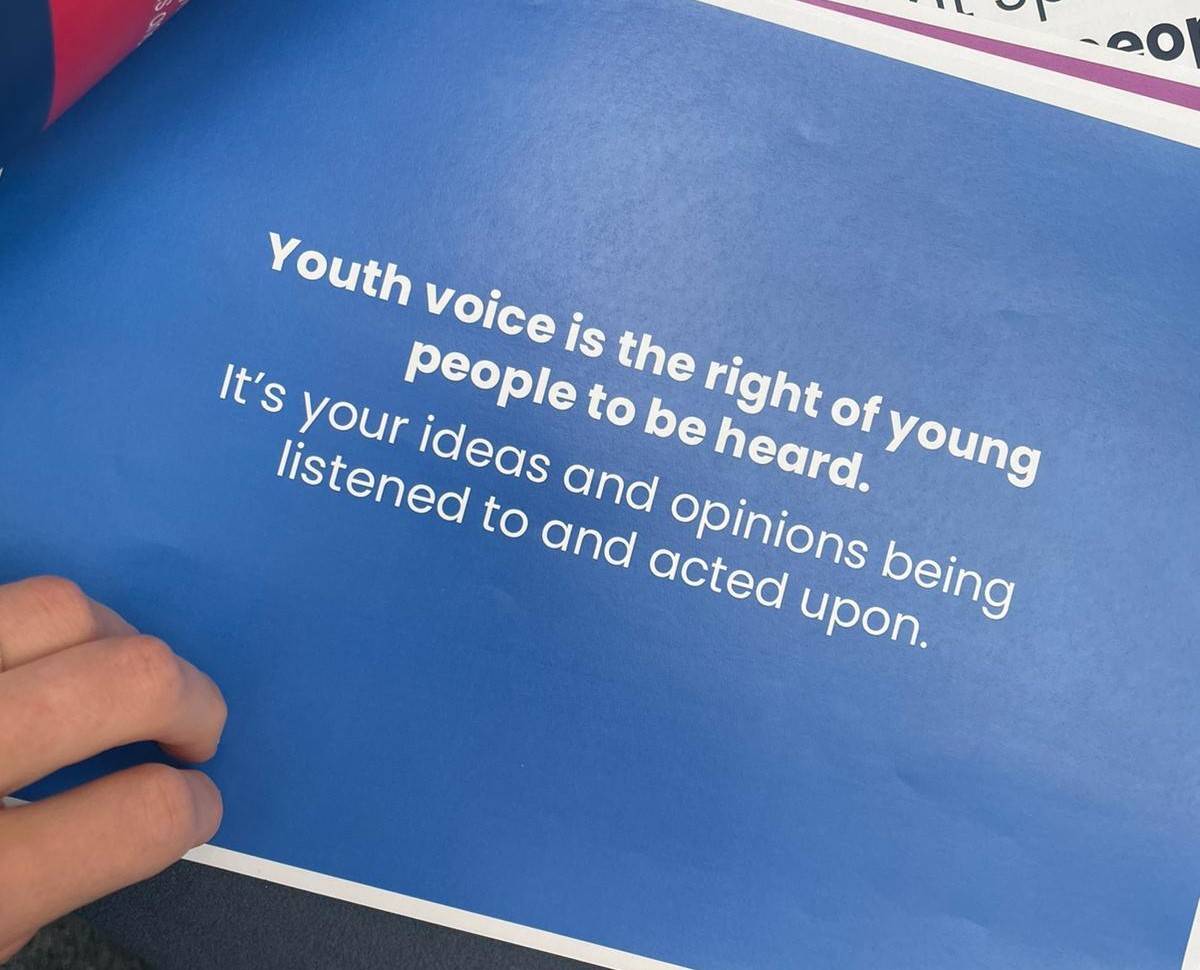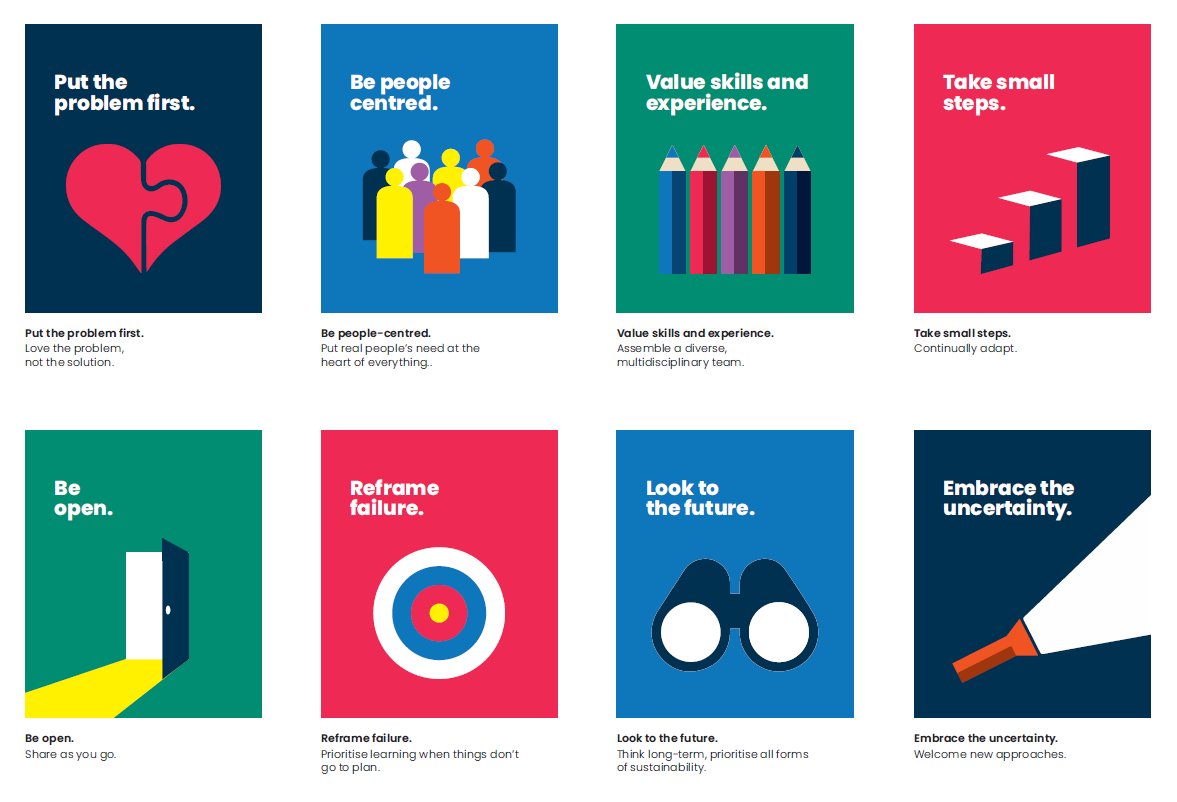
Our Youth Voice Adventure: lessons learned during co-design
blog | Words Savannah Fishel | 29 Aug 2024
With support from us at Innovation Unit, Sport England’s brilliant Youth Voice team have been navigating the roller coaster of codesign. As we gear up for the next big adventure – prototyping – it’s essential to pause, harness what we’ve learned, and share it with you.
Context: our innovation and learning partnership
Since 2021, Innovation Unit has partnered with Sport England to cultivate a culture of innovation and elevate youth voices within their work. This aligns with Sport England’s Uniting the Movement strategy, aiming to ensure every child and young person experiences the joy and benefits of physical activity. By embedding youth voice in the design and delivery of activities, we put their needs, expectations, and safety first.
Here and now: codesign recap
Together, we have been moving through a service design process of: discovery (including desk research, 14 in-depth interviews with sector professionals, a workshop with 20+ young people at the Youth Innovation Conference conference, desk research, and synthesis with Sport England colleagues); defining the challenge and opportunities; co-designing solutions; looking toward delivery and implementation in the future.
We collaborated with young people as well as partners (professionals working in organisations across the education and activity sector) to reflect our two objectives: 1) put young people’s voices at the heart of Sport England’s work, 2) support, influence and advocate for approaches to youth voice to be embedded across the sector.
Our key activities were:
- Co-design session with sector partners a dynamic four hour online session of co-developing and prioritising ideas.
- Two codesign sessions with young people supported by Mind and Street Games , tailored the partners’ understanding of young people’s preferences.
- Synthesis Session: a team day to identify key themes across our discovery, define and design stages, and assess emergent ideas against the following criteria: feasibility (we can do it), internal desirability (aligns with Sport England’s capabilities and public profile) external desirability (there is an appetite from the intended user), viability (it would work) and potential for impact (it is likely to create the change we’re looking to make).
We remain grateful for the impressive commitment, honestly, energy and creativity of all who attended.
Innovation and Digital Best Practices: the messy reality
At the start of this journey, we co-developed and signed up to 8 Innovation and Digital Best Practices, which continue to be our guiding stars. Some were front and centre during this most recent phase.

- Value skills and experiences
Diversity amongst codesigners — across geographies, ages, backgrounds and professionalisms – was crucial in the development of inclusive ideas, centred around Sport England’s core goal of tackling inequalities in physical activity. We worked closely with Mind and Street Games to recruit a range of young people and ensure our sessions were designed to foster high levels of effective participation.
Learning in Action:
- Trusting expertise: We listened hard to Mind, Street Games, other partners, and young people and partners with an open mind, testing our own assumptions and changing our plans where needed, even if it was last minute.
- Engaging every voice: Smaller group discussions and creative tools facilitated high engagement. For example, we used Miro to visualise ideas in real time, demonstrating to participants their input was captured and valued.
Widespread change does not happen in isolation; we recognise that Sport England acts within a broad ecosystem and commit to deepening the relationships we’re building. It’s people who innovate, not organisations, so close working relationships will be key for our work going forward.
- Be People-Centred
Tailoring sessions to our codesigners needs – whilst peppering the session with games and opportunities for connection – led to comfort, high energy and honest feedback. Keeping the needs of codesigners front of mind is critical for giving ideas the best chance of delivering relevant, appropriate, direct impact.
Learning in Action:
- Inclusive Fun: We avoided complex online platforms, did not assume codesigners had laptops with a mouse and keyboard, and assigned scribes. Therefore, young people could focus on direct conversation. Where people were not comfortable coming off mute, a trusted colleague at Mind contributed on their behalf whilst they used the chat function.
- Keep it simple: In a short space of time, we needed to move all the way from initial introductions (to each other, Sport England and this work), to a list of potential and prioritised solutions. Simple activities, accompanied by simple instructions, were key. We worked to find the balance between providing transparent context, and leaving out unnecessary or distracting information. For example, to rapidly and clearly explain what Sport England do, we used personas which allowed us to move outside of the abstract, using stories to demonstrate when and how Sport England’s work can (and does) change lives.
- Take Small Steps: Continuously Adapt
When you embark on co-design, you don’t know what will come from it. Relinquishing control is part of the ethos. This chasm of knowledge can leave space for doubt to creep in: What if we get stuck in the problem, and it’s too hard to generate solutions? Do we have the capacity and capability to implement ideas which emerge? How much should we steer people or stay open? Do people care about this work and want to engage with us?
At times like this, we remind ourselves that through Discover and Design stages, we conducted user research, defined our problem and opportunity area based on qualitative and quantitative evidence, and that there is no ‘perfect design process’.
Instead, we rely on our values practices of user-centred, inclusive design and keep another one of our Innovation and Digital Best Practices front of mind: ‘Embrace the Uncertainty: welcome new approaches’. Getting comfy in those ‘grey areas’ is tough, but the unknown can be a powerful ally in innovation – keeping us curious, open, reactive to users’ lived experience, and creating the space to give co-designers real power to guide the work.
This phase required moving forward with an open mind, and the team showed remarkable creativity and resilience. To maintain momentum and progress, together we focused on each next step in front of us, listened to partners and users, and adapted our approaches accordingly.
Learning in Action:
- Tailored Design: Street Games wanted to co-opt an existing in-person session facilitated by them, and Mind preferred a shorter, online session facilitated by us, with their support and attendance. So, we created two versions of the workshop, thinking carefully and collaboratively about the best ways to foster engagement in different settings.
- Balancing Acts: Creating space for out-of-the-box thinking was crucial to get out of the status quo – and we included plenty of whacky activities and prompts – but we also saw that co-design is not always about the craziest or the most new ideas. In fact, if co-designers are most interested in building on or adapting existing approaches instead of entirely new concepts, it may be a sign that the real change users want to see is closer than you think.
From codesign to prototyping: the next big adventure
We are taking four ideas from the design phase, all of which have mandates from both co-designers and Sport England decision-makers.
Now, it’s time to dig deeper: to conduct more user research to strengthen the rationale that proposed solutions rest upon; develop and test the ideas; generate rapid insights; and, make informed improvements (iteration).
We’ll do this through a in-person Youth Voice Design Jam over three days in August. Partners and young people will form ‘Design Studios’, supported by Sport England and Innovation Unit colleagues, to prototype and iterate ways to embed Youth Voice in Sport England’s work, and across the sector. Young people will learn about the service design process (gaining a certificate) and create social connections, remunerated for their time and expertise through vouchers, and celebrated through prize-giving.
Final reflections
The codesign phase has been a whirlwind of creativity, collaboration, and learning. We’ve learned to trust those who know best, stay curious and adaptable, keep it simple and embrace the unknown. Above all, when things feel tough – as innovation often does – to take small, practical steps to gain insight from intended beneficiaries, and trust that clarity will emerge.
As we move into prototyping, we carry these lessons with us. Our journey is just beginning, and we’re excited to share more insights and updates. After all, one of our Innovation and Digital Best Practices is: ‘Be open: share as you go’.